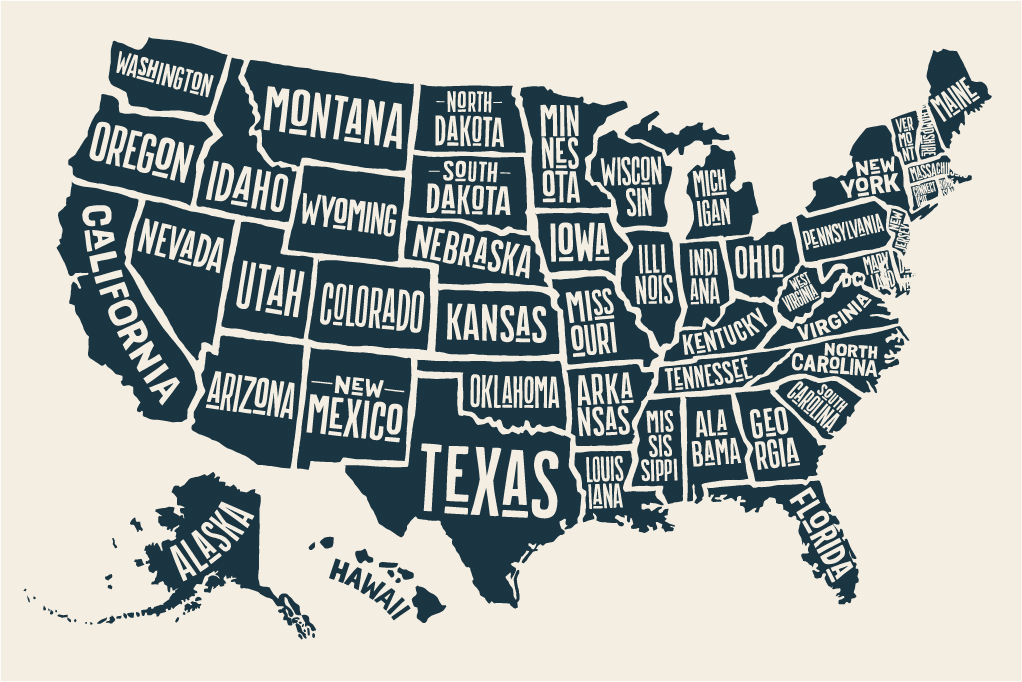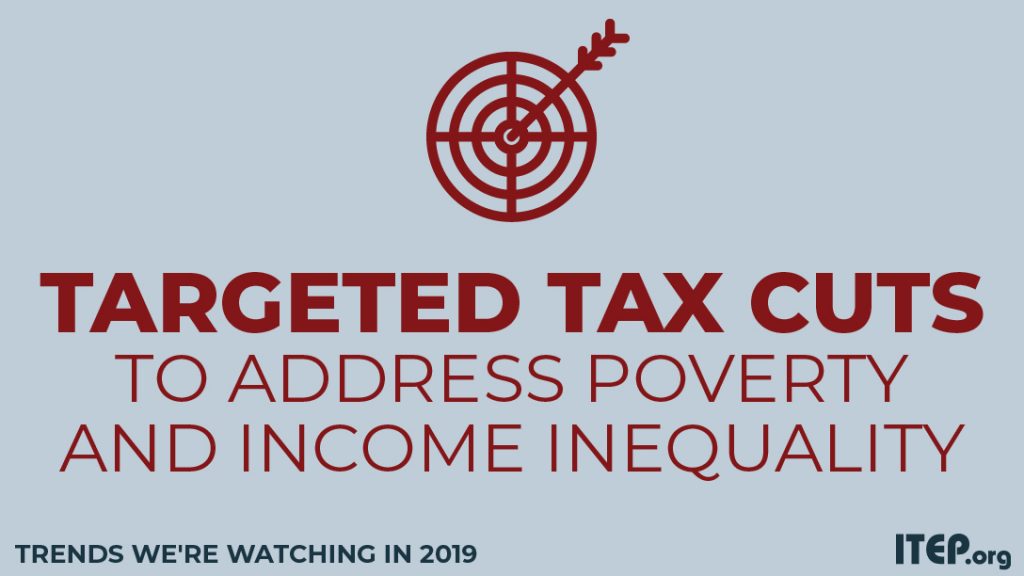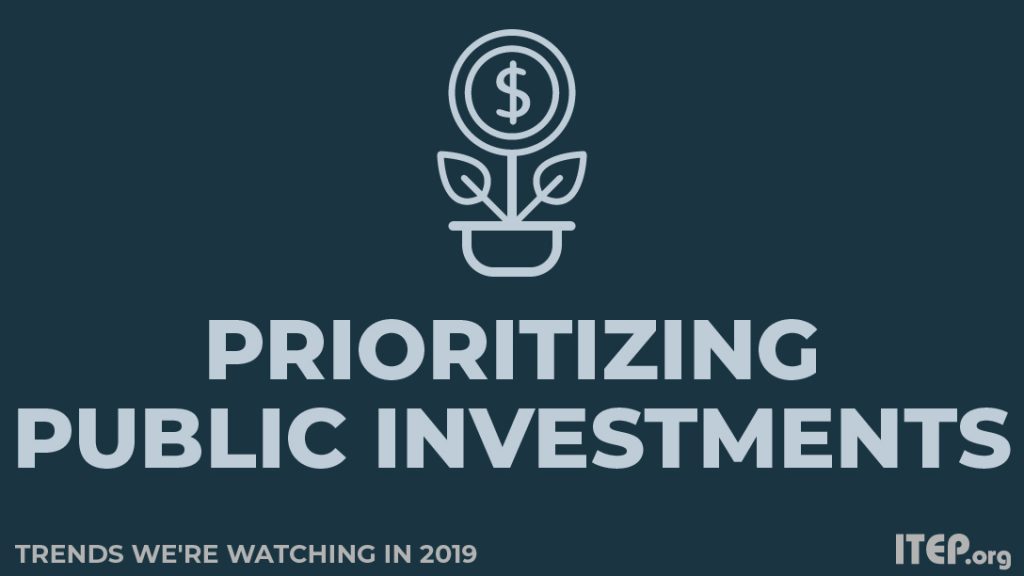This is part five of a seven-part series on state trends we’re watching in 2019.
It’s always troubling for those concerned with adequate and fair public finance systems when states prioritize tax cuts at the cost of divesting in important public priorities and exacerbating underlying tax inequalities. But it’s even more nerve-racking when it happens on the eve of what many consider to be an inevitable economic downturn.
Efforts to cut taxes are not surprisingly absent in states struggling with budgetary shortfalls, such as ILLINOIS where the problems are long-standing, and in states experiencing temporary shortfalls like IDAHO. However long-standing budget issues in PENNSYLVANIA and unforeseen revenue slumps in both KANSAS and MISSOURI have not dissuaded certain lawmakers from advancing tax cut proposals anyway (such as Pennsylvania Gov. Wolf’s proposal to cut corporate income taxes). RHODE ISLAND seems unique among states experiencing shortfalls in that lawmakers are considering revenue-raising initiatives to close their budgetary gap.
Too many lawmakers in states that find themselves in comfortable fiscal situations at present are in danger of blowing their surpluses on tax cuts that are costly, disproportionately benefit those already doing well instead of promoting wider economic opportunity, and compromise the state’s fiscal status when a downturn inevitably occurs. This includes proposed personal income tax rates cuts in ARKANSAS, COLORADO and UTAH, as well as an assortment of other tax cuts in states including MARYLAND, MINNESOTA, SOUTH CAROLINA and WEST VIRGINIA. And, despite broad public support for higher taxes on wealth, lawmakers in CONNECTICUT are targeting their most progressive tax source for elimination–the estate tax.
Arkansas Gov. Asa Hutchinson has proposed a significant tax cut for the rich, spending an estimated $157 million annually (and growing) to reduce the income tax liability of primarily taxpayers in the top 5 percent or those with average incomes over $280,000. This is in addition to hundreds of millions of tax cuts lawmakers hope to enact over the course of the next several years all while somehow avoiding the budget crises in states that have tried it before like Kansas and Oklahoma.
WEST VIRGINIA Gov. Jim Justice is proposing the state completely exempt social security income from taxation, the result of which is another tax cut heavily favoring the wealthiest West Virginians since the vast majority of older adults in the state are too low-income to owe any taxes on their social security income. A second proposal would eliminate the property tax on business and inventory.
And in UTAH, dueling tax cut proposals are in play with Gov. Gary Herbert advocating for a $225 million tax cut from modernizing the sales tax through base expansion to services and bringing down the general rate and the House Speaker favoring an equally sized cut on lower income tax rates. A cut of this magnitude from either tax base is unprecedented in the state’s history.
Taxpayers and the fiscal health of each of these states would be better served in the long-term by having these surpluses reinvested in the engines of economic growth—education, workforce development and infrastructure—or, following the examples of governors in CALIFORNIA and ARIZONA, prioritizing building up their Rainy Day Funds for when harder economic times inevitably fall.
Trends We’re Watching in 2019:
- Using Targeted Tax Breaks to Help Address Poverty and Inequality
- Raising Revenue and Spending Surpluses to Prioritize Critical Public Investments
- Addressing Lingering Federal Conformity Questions and Opportunities
- Attempting to Double Down on Failed Trickle-Down Regressive Tax Cuts
- Reforming and Implementing Cannabis Laws
- Consumption Taxes: the Good, Bad and the Ugly




